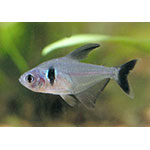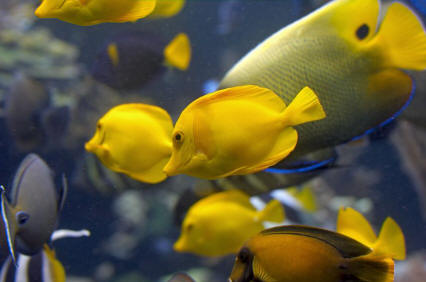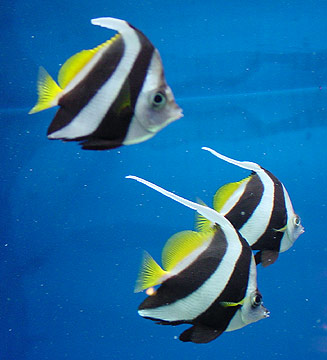Tetra Black Phantom

|
Scientific Name: Megalamphodus megalopterus Price: Upon Request Origin: Central Brazil Family: Characidae NOT AVAILABLE NOW |
|
Other Names: Hyphessobrycon megalopterus, Black Phantom Tetra, |
|
Technical Info
Temperature: 22 - 26 ℃
pH: 6 - 7.5
GH: 4 - 8
Max size: 4 cm
Min Tank size: 50 Ltr
Position in Aqua: Middle swimmer
Description
The male and female Black phantom tetras are very easy to distinguish from each other. The female Black phantom tetra has red adipose, pectoral, and anal fins. The male has a silvery or smoky gray colouration. The male is also equipped with a bigger dorsal fin. Due to her reddish colouration, the female Black phantom tetra is sometimes confused with other tetra species, e.g. the Serpae tetra. Both male and female Black phantom tetras have oval and laterally compressed bodies and are decorated with a big black patch behind the gills, in front of the dorsal fin. The dorsal fins and the tail fin are gray where they attach to the main body, and will then gradually turn into a black colour. The anal fin has a black edge.
Food
Easy to feed. It will readily accept just about anything offered. For the best condition and colours, offer regular meals of small live and frozen foods such as bloodworm, Daphnia and brine shrimp, along with dried flakes and granules.
Breeding
The fish should be well conditioned to induce spawning. If possible, live foods should be included in the conditioning period. Frozen foods like bloodworms are also a good conditioning food. The black phantom tetra is an egg-scattering species. To stimulate breeding, lower the pH to about 5.5-6, and decrease the general hardness of the water to below four degrees. The breeding tank should have plants, both rooted and floating, and low light. A female black phantom tetra will produce about 300 eggs. These fish will eat their own eggs and fry, so the parents are usually removed after spawning.
Compatible with
Itís a good tankmate for most commonly available livebearers, danionins, rasboras, other tetras and peaceful bottom dwellers such as Corydoras or smaller Loricariids. It can also be kept with the majority of commonly available gouramis and dwarf cichlids. Obviously, it isnít safe with larger species that may see it as food. Always buy a group of at least 6 of these, preferably 10 or more.

